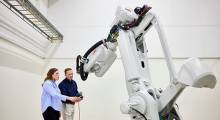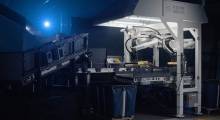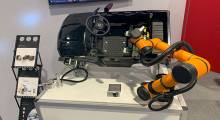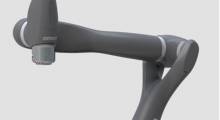Modex 2014 is a done deal. All thoughts now turn to Chicago and ProMat 2015. Well, maybe not all thoughts. Here’s a few impressions I took away from the trip to Atlanta last week.
It’s all about e-fulfillment: No one who has been around the industry for any length of time would argue that we go in cycles. Raise your hand if you remember the show when RFID was the cure for all that ails the supply chain. Heck, I remember the show in the early 2000’s when every booth had an e- visible somewhere. There have been other recent shows where the emphasis was on building mixed pallets for grocery and solutions for the beverage industry as those verticals embraced automation in a big way. Both still have plenty of room for improvement and investment. But no one can doubt that e-fulfillment and piece picking is driving our industry today in what seems an unprecedented way. Retailers of all size are coming to grips with the fact that if they’re serious about e-commerce, they need some level of automation. The tipping point seems to be 1,000 orders a day from a facility.
Are we there yet?: As I wrote earlier this week, our industry today is all about software and not hardware. Someone will probably figure out a way to make a conveyor run faster or a sorter sort faster, but the emphasis today really is about working smarter. The bigger issue seems to be what system is in control. Take inventory, for instance. Retailers and solution providers alike seem to be struggling with questions such as whether in this new omni-channel world, inventory should be controlled by an ERP system, a WMS or a warehouse control system (WCS). Based on a number of conversations with people smarter than me, there seems to be no consensus and no one model. That said, ARC’s Steve Banker suggested a new framework for thinking about supply chain execution software in the January issue of Modern.
A rose – or software system – by another name …..: One of the things I noted after ProMat 2013 was the emergence of a new role for WCS. Software that once controlled equipment is now managing the picking and packing processes between the creation of a wave or batch of orders and the shipping sorter. I even wondered whether the time was right for a new acronym, such as Order Fulfillment System. Analysts like Banker and Gartner’s Dwight Klappich (http://www.gartner.com) have contended that the role for WCS might have expanded, but the acronym still works just fine. At Modex, however, we saw a number of vendors toss out their own acronym for their iteration of WCS. What I wonder is: Will our customers be able to figure it out?
Supply chain convergence is coming: Speaking of Dwigh Klappich …. He has been writing about a topic he calls supply chain convergence. Klappich defines this as the ability to synchronize and optimize an end-to-end process, across the supply chain. While Klappich contends that true convergence is still off in the future, we saw examples of the concept in action at the show. Manhattan Associates, for instance, was talking about managing manufacturing, distribution and transportation processes from one supply chain execution platform. If you think about it, that was really the theme of Modex: bringing together the different voices of the supply chain under one roof. The fact that the logistics show was in its own corner of the floor might illustrate that we’re just at the front end of convergence, but it’s coming.
I’m watching robots and vision systems: In recent months, I’ve had conversations with a European company developing a WMS that directs workers wearing Google glasses; and a WMS company that is deploying a highly-visual on an iPad. At Modex, you may have had a chance to watch vision-guided picking at Knapp’s booth. And, during a breakfast meeting, an executive from Honeywell asked what we would think of a wearable device that brought together voice, scanning and some kind of vision-based picking system?
Meanwhile, there were more robotic solutions on display than I’ve ever seen in the past. I don’t think any of these technologies are right around the corner when it comes to broad-based deployment. But if you think of the challenges many DCs face with staffing issues, they don’t seem far-fetched.
For me, it was a great show. Let me know what caught your attention at [email protected].
About the Author
Follow Robotics 24/7 on Linkedin
About the Author
Follow Robotics 24/7 on Linkedin
Article topics
Email Sign Up















